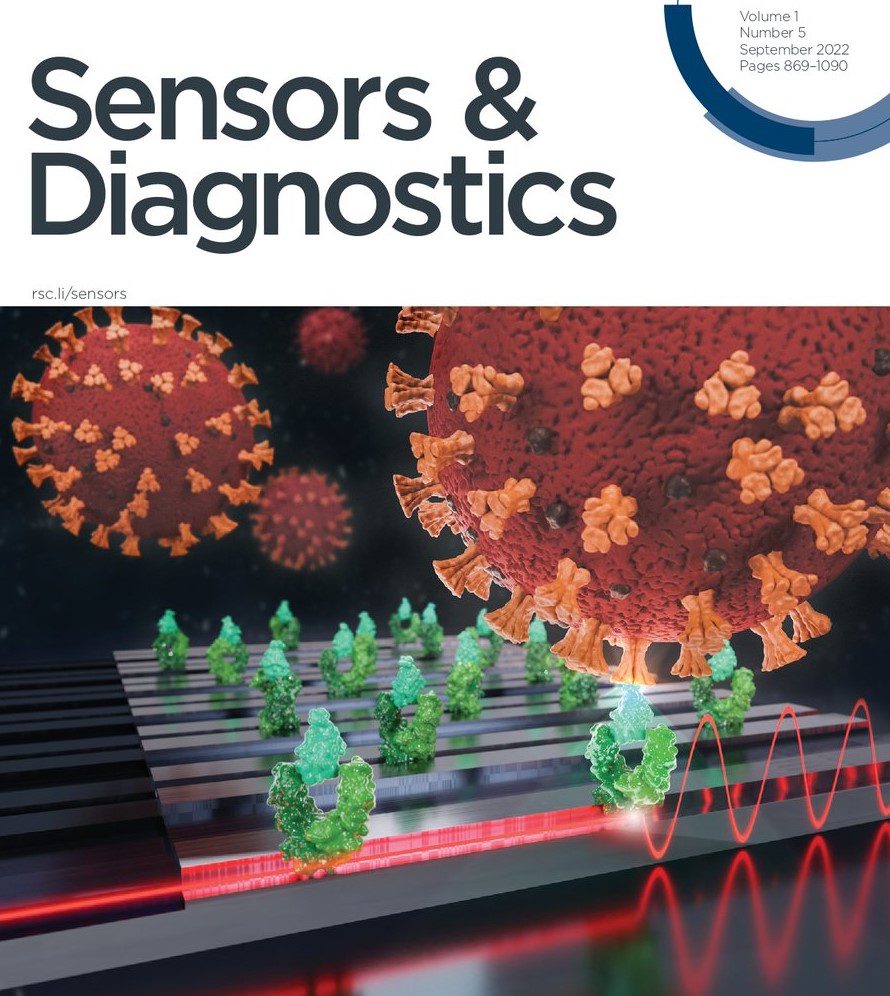Thursday, 01 December 2022
A sensitive photonic nanodevice provides rapid and quantitative diagnostic of COVID-19
A team of researchers led by members of the ICN2 NanoBiosensors and Bioanalytical Applications Group presents on the pages of ‘Sensors & Diagnostics’ an innovative photonic biosensor that can detect the presence of the SARS-COV-2 virus at very low concentrations in a sample. It can also provide a quantitative measure of the viral load in less than 20 minutes, which is crucial to prevent the spread of the infection and to intervene quickly with the appropriate treatment.

Although the worst phase of the COVID-19 pandemic is over, the SARS-COV-2 virus is still circulating among humans and new variants continue to emerge. It is expected that this disease will become endemic in the coming years; therefore, improving current diagnostics and treatment management systems is still crucial to reduce mortality and avoid hospital congestion.
A team of researchers coordinated by Prof. Laura Lechuga, Dr Maria Soler, and Dr M. Carmen Estevez –group leader and senior researchers, respectively, from the ICN2 NanoBiosensors and Bioanalytical Applications Group— has developed an innovative biosensor for the direct diagnosis of COVID-19 that provides reliable and quantitative detection of the SARS-COV-2 virus even at low concentrations. Since it is based on the direct capture of the virus and thus no sample processing is required, the result of the test can be available within 20 minutes, which makes this biosensor ideal for application at the point of care.
As explained in a scientific article recently published in Sensors & Diagnostics (whose first author is Dr Gisela Ruiz-Vega, a former postdoctoral researcher in Prof. Lechuga’s group), the detection technique is based on a photonics sensor nanotechnology, applied here for the first time to the direct detection of a virus. The nanosensor was functionalized with nanobodies, bioengineered receptors specifically designed to capture the SARS-COV-2 virus and produced by Dr José M. Casasnovas and Dr Luis Angel Fernández from the National Centre of Biotechnology of Madrid (CNB-CSIC, Spain).
The outcomes of the tests performed in laboratory demonstrated that this technique allows the detection of the virus over a range of concentrations that can be as low as 100 infectious viral particles per mL. In addition, this remarkably sensitive biosensor proved to be effective not only in identifying the virus but also in providing a measure of the viral load. The excellent data collected in the laboratory are currently being validated through clinical tests on COVID-19 patient samples.
Since the assay procedure is not complex, the readout is straightforward, and the diagnostic results are available in less than 20 minutes, this innovative nanotechnology has great potential to be applied as a rapid and reliable method for point-of-care diagnostics. The authors of this research are now working on integrating the biosensing system into a compact and automated device, to be installed in hospitals and clinical laboratories. The photonic technology employed in this study can be used for the detection of other respiratory viruses, hence the authors envision the possibility of testing a patient for different viral infections at the same time.
This study, which has been highlighted on one of the covers of the issue, was carried out by members of the ICN2 NanoBiosensors and Bioanalytical Applications Group, led by Prof. Laura Lechuga, in collaboration with colleagues from the National Centre of Biotechnology of Madrid (CNB-CSIC, Spain), the University of Valencia (Spain) and the National Institute for Infectious Diseases ‘L. Spallanzani’ of Rome (Italy). It was mainly funded by the H2020 EU Programme, through the CoNVaT project.
Image credit: Dámaso Torres / ICN2
Reference article:
Gisela Ruiz-Vega, Maria Soler, M. Carmen Estevez, Patricia Ramirez-Priego, Martalu D. Pazos, María A. Noriega, Yago Margolles, Clara Francés-Gómez, Ron Geller, Giulia Matusali, Francesca Colavita, Antonino di Caro, José M. Casasnovas, Luis Angel Fernández and Laura M. Lechuga, Rapid and direct quantification of the SARS-CoV-2 virus with an ultrasensitive nanobody-based photonic nanosensor. Sens. Diagn., 2022,1, 983-993. DOI: 10.1039/D2SD00082B

